When I first met Disney Legend Marty Sklar, retired Executive Vice President and Ambassador for Walt Disney Imagineering, he sat down to discuss a small portion of his 54-year career working with and for Walt Disney. Marty is now president of his own company, Marty Sklar Creative, Inc., and is one of the founders of and current president of the Board of Directors for the Ryman-Carroll Foundation (now Ryman Arts). Ryman Arts is a foundation created in 1989 as a tribute to fellow Disney Legend and artist Herb Ryman (1910-1989). After the break you can listen to my most recent interview with Marty Sklar discussing the importance and significance of Herb Ryman to the Disney Company, and how Ryman Arts continues his legacy.
Image: Disney Legend Herbert Dickens Ryman “The Thoughtful Elf”;
June 28, 1910 – February 10, 1989; photo courtesy of Ryman Arts.
Click here to listen to the complete interview where Marty Sklar talks all about his colleague, and friend, Herb Ryman.
Who was Herb Ryman? The best… simply the best…
Every first glimpse Disney fans have had of a Disney theme park from Disneyland to Walt Disney World, to Epcot, to Tokyo Disneyland, and the early drawings for Main Street U.S.A. in EuroDisney (now Disneyland Paris) were drawn by Herb Ryman. Walt Disney felt so strongly about Ryman’s artistic ability to communicate an idea, story, or even a whole park that Herb Ryman was always the one that Walt Disney went to – starting in 1953 when Ryman drew the first overall drawing of Disneyland.
Image: Disneyland, schematic drawn by Herb Ryman September 26 & 27, 1953 under the watchful eye of Walt Disney. Image courtesy of Walt Disney Imagineering.
However, prior to Walt Disney tapping Herb Ryman in 1953 to draw Disneyland, he had been employed in the studio – serving as art director on such Disney films as Fantasia (1940) and Dumbo (1941). Walt Disney became familiar with Ryman’s work on those films and selected him to be one of approximately 15 artists to accompany Disney on the “Good Neighbor” trip to South America that ultimately resulted in the production of Saludos Amigos (1942) and The Three Caballeros (1945). Therefore, Walt Disney had a great knowledge of and affinity for Ryman’s sketching ability, and his ability to communicate a concept through his visuals. Marty Sklar added, “He was just simply the best. That’s the best way to say it. He was the best.”
Sklar reflected on his first meeting with Herb Ryman. “I don’t think I met him the first summer (1955) when I worked at Disneyland in public relations. However, when I came back that second summer (1956) after finishing my last year at UCLA, it was then I started working with all the great artists at Imagineering – of course Herbie had drawn a lot of the illustrations, and so it was my good fortune to get to know him at that time.”
Image: American Adventure, concept painting, Epcot, 1979. Image courtesy of Walt Disney Imagineering.
Herb Ryman continued working at Imagineering making concept drawings for individual attractions until the late 1980’s. Some of his final concept sketches were for the Indiana Jones Adventure in Disneyland – which just so happens to be celebrating its 15th anniversary this year, 2010. Marty Sklar noted that Herb Ryman’s meticulous attention to research and storytelling was one of the reasons for his success and longevity as an artist. He described Ryman’s home studio as filled with books, magazines, and journals from his trips around the world, and he relied on these sources when completing his artwork. Ryman engaged in a deep study of the material before beginning a project, “It didn’t matter if it was New Orleans – Herbie drew all those wonderful illustrations of New Orleans Square for Disneyland – or Indiana Jones. He had to understand the story and feel like he could interpret it in the illustration”, remarked Sklar. Herb Ryman had the ability to transport the viewer into a place long before they ever walked into the three-dimensional space. Walt Disney recognized and loved that ability and Marty declared, “It was why he wanted Herbie to do those illustrations when he first broached a project to the public.”
Image: Indiana Jones Adventure, concept painting, Adventureland, Disneyland Park, 1987. Image courtesy of Walt Disney Imagineering.
World Odysseys
Herb Ryman traveled on numerous odysseys around the world, and travel was an important part of his work and research. These travels began in the 1930’s to Southeast Asia when he developed a love for that region. His travels continued with the Ringling Brother’s Circus for two summers in 1939 and 1940 when the circus still traveled in tents.
Image: “The Big Top and the Grease Wagon”, 1949, courtesy of Ryman Arts.
As previously mentioned, he traveled with Walt Disney and other studio artists on the good will trip to South America, to Japan and France to prepare for the opening of Disney Parks in those countries, and a trip to Africa in the 1980’s on a trip for Imagineering for a proposed Africa pavilion for Epcot.
Image: “Cormorant Condominium”, 1983, Kenya’s Mt. Longonot in the background, courtesy of Ryman Arts.
Looking at Herb Ryman’s sketchbooks, you could find sketches from all these journeys jumbled together. Drawings from trips he took in the 1930’s to travel with the circus and more recent Disney projects were all mixed together in his books. However, he would also make meticulous notes along with his sketchbooks such as: the sky was dark and ominous, there was a fire burning, animals he saw in Africa, notes about colors, notes about lights, were all scribbled on his sketches. He could paint the scene, sometimes years later, by consulting those copious notes written in his sketchbook. Marty Sklar added, “to have somebody like that and knowledgeable about these different places in the world was really a great advantage for all of us to feed off of. He had first-hand knowledge of different places in the world that he went. I have a little sketch he did of a bridge along the Seine in Paris that I treasure to this day.”
Image: “Pink Marble Bridge”, Summer Palace, Peking, 1983, courtesy of Ryman Arts.
Patron Saint of Imagineering
Herb Ryman loved the people of Walt Disney Imagineering. “He was the patron saint, certainly of Imagineering and maybe even Disney artists,” declared Sklar. Most of the time Ryman wandered the building looking for artists to help, to improve their work, to understand their assignments. Marty Sklar cited a detailed example of Ryman’s mentoring:
“I was having difficulty getting an artist to draw something for Typhoon Lagoon. He was unable to focus on that boat atop the mountain and make it the centerpiece of the drawing. The drawing was wandering off and had too much other information that drew your eye away from that. So about 1:00 pm I went down to this artist’s office to see how he was doing, I started in and heard this voice saying ‘No, no, no give me that paint brush!’ I backed out right away because I knew it was Herbie. The next morning I came in very early in the morning to see what he’d done. He had focused that whole illustration with maybe a dozen brush strokes, but he focused it on exactly what we wanted to say out of that drawing. To this day, when I look at that drawing, I see his brush strokes even though nobody else knows what they are. I know what he did to make that work.”
Image: Typhoon Lagoon Water Park, concept painting, Herb Ryman was the secondary artist for this piece. Image courtesy of Walt Disney Imagineering.
Marty Sklar insisted that Ryman’s assistance to his fellow artists was always done in a positive way. “He did it to be helpful, and to improve the other artist,” said Sklar. When Herb Ryman passed away February 10, 1989, his friends and colleagues, including Marty Sklar, wanted to create something in his memory. The Ryman Arts program was founded and grew out of their desire to carry on the mentoring tradition of Herb Ryman.
Ryman Arts: Making a Difference
As he described the program, Marty Sklar stated, “We’ve had probably 4,000 young people through our program already in 20 years, and we’ve reached out particularly into areas of downtown South Central Los Angeles – very diverse areas. We’ve probably reached another 7,000 students in inner city schools in the Los Angeles area through outreach programs that we’ve had.” Many of these students have obtained positions at Disney, Dreamworks, and in graphic design firms. In fact, the Ryman Arts logo was designed by Wayne Hunt, one of the premier graphic design firms in Southern California, and the specific graphic artist that did the work was a Ryman Arts alumni.
Image: California High School students attending a Ryman Arts program. Image courtesy of Ryman Arts.
Ryman Arts teaches high school teenagers essential skills for art and life in an entirely free program. It’s an important mission during these turbulent economic times when public school systems are under such intense budget pressures and cutting art and music programs. “We definitely feel a greater burden to make this opportunity available to young people with talent,” remarked Sklar. With this greater burden comes the challenge of financially supporting the program to ensure it remains cost-free for its students. Each year Ryman Arts needs to raise $750,000 to keep the program operating, but this is a good investment in our young artists. Marty Sklar told me 98% of Ryman Arts graduates go on to higher education in art school or traditional university. In addition to supporting their artistic talents, “We give them the foundation skills and we help them develop personally,” Sklar maintained.
Marty Sklar then went on to describe another graduate of their program – a young man from Guatemala, who lived in downtown Los Angeles, attended Belmont High School, and spoke no English. His teacher at Belmont recognized his budding artistic ability and recommended him for the Ryman Arts program. He graduated from Ryman Arts and Belmont High School, and earned a scholarship to an art school along the way. When he finished art school he said, “I’m going to be a teacher”, and now he’s back teaching art at Belmont High School. “Makes you feel good. Makes you feel like you’re doing something that makes a difference,” related Marty.
Sklar Legacy Fund and Ryman-Sklar Internship Program
When Marty Sklar retired after 54 years at Disney, the Walt Disney Company decided to create the Sklar Legacy Fund – an endowment to fund an entire class of students every year at Ryman Arts. Disney pledged if Marty Sklar could raise $100,000 for Ryman Arts, they would contribute another $250,000 towards the endowment. At the time of our conversation, Ryman Arts was already close to announcing they had raised the required funds. In addition, each year one graduate from Ryman Arts, who has gone on to college to be an artist, will get an internship at the Disney Studios in animation and another student will receive an internship at Walt Disney Imagineering as part of the Ryman-Sklar Internship Program. Therefore, Ryman Arts students will now have a direct opportunity to get a sample for working in a professional environment at Disney. Marty Sklar added, “It’s very exciting and of course I’m proud that Disney felt strongly enough about what I’ve contributed over the years to establish that with Ryman Arts.”
Image: Ed Nowak presents a symbolic Disney “check” to a surprised Marty Sklar during his retirement festivities on July 16, 2009. Image courtesy Walt Disney Imagineering.
A Brush With Disney
I asked Marty if there were ways our audience could get directly involved with Ryman Arts. In addition to making direct donations through the Ryman Arts website, he described a book titled “A Brush With Disney: An Artist’s Journey” entirely written in Herb Ryman’s words about his life as an artist at Disney as well as his own non-Disney artwork. The book includes forwards by Roy E. Disney, Harrison “Buzz” Price, Marty Sklar, Andrea Favilli (Principal Favilli Studio), and Lucille Ryman Carroll (Herb Ryman’s sister). Marty Sklar said, “It’s got our personal remarks about Herb Ryman, and then it’s full of wonderful, wonderful illustrations of Herb’s work in his own world and in his Disney world.” In addition, all proceeds from the book go directly to support Ryman Arts program.
I used the book heavily as I prepared for my conversation with Marty Sklar about Herb Ryman. When I sat down with the book, I was totally blown away by what I saw – page after page of beautiful artwork from his travels around the world, his portrait of Alex Haley, and his concept drawings for Disney Parks. The book was totally engrossing and mesmerizing, and the reader gets a full picture of Herb Ryman the artist from reading his words and looking at his images. It is a visually stunning book. Marty Sklar added, “We’re very fortunate that two wonderful people, who unfortunately have passed on, David Mumford and Bruce Gordon, were the ones that produced that book for us, and it really is, if I can put it this way, a work of art.”
Not only is the book full of Herb Ryman’s artwork, but the jottings from his journals are included as well. Notes about his travels, what he saw, what he was thinking, are all included in the book. I also chuckled when I saw the subdued journal entry from the diary of Herb Ryman’s mother dated September 26 & 27, 1953 with the simple statement, “Cloudy and cool ‘till noon, Herbert at Disney’s working on Disneyland.” Marty Sklar then related his version of how the original drawing for Disneyland came about:
“You know that story is NOT an apocryphal story. Walt called Herbie and said, Roy O. Disney (his brother) has to take the drawings of Disneyland to New York on Monday to show the bankers (this is 1953), this is a Friday, and Herbie said, ‘Oh, I can’t wait to see them.’ Walt replied, ‘No, no, you don’t understand, you’re going to do them.’ Herbie said, ‘I don’t know what to draw.’ Walt replied, ‘I’ll tell you what to draw.’ Then literally stood at Herbie’s shoulder for the weekend while Herbie drew that first big overall drawing of Disneyland and Walt told him what to draw. It’s a remarkable piece when you think about that. First of all, that was all in Walt’s head, and second, that it could come out of Herbie’s wrist. It’s quite remarkable.”
It’s quite remarkable indeed, and I can see why Marty Sklar described Herb Ryman as “the best… simply the best.” For more information about Herb Ryman and Ryman Arts, you can go to www.rymanarts.org where you can find links to donate directly to their programs or to purchase a copy of “A Brush With Disney.”
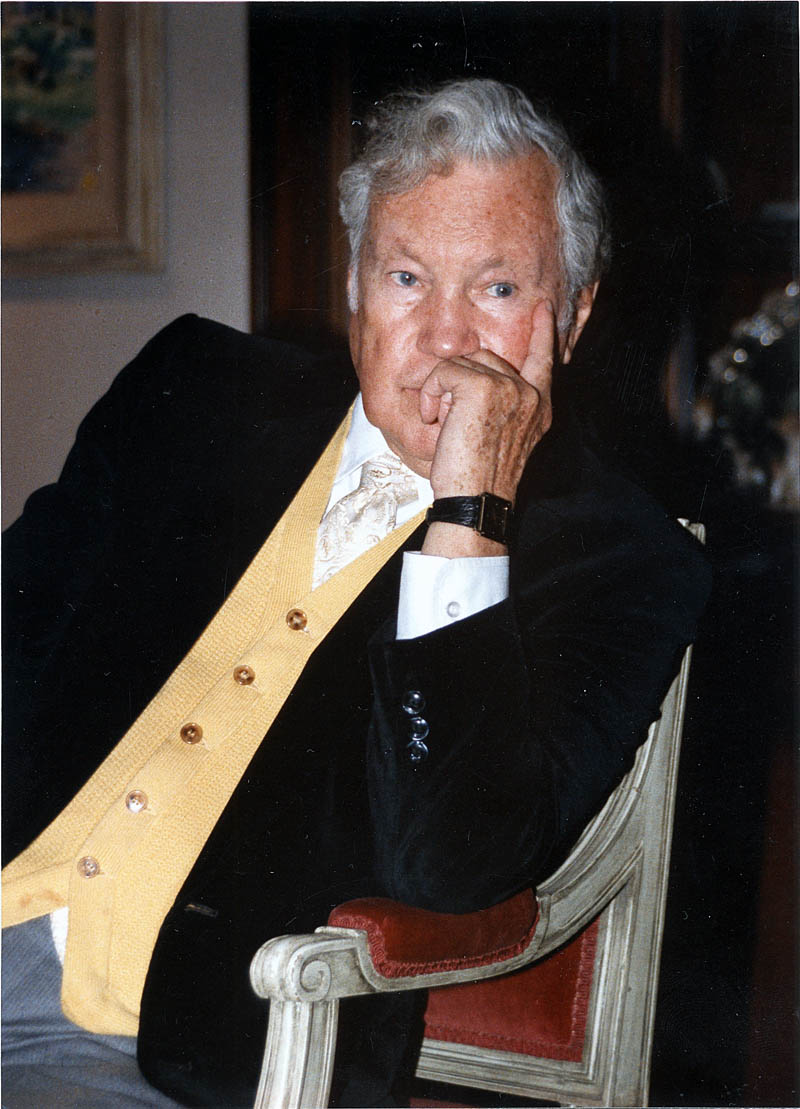
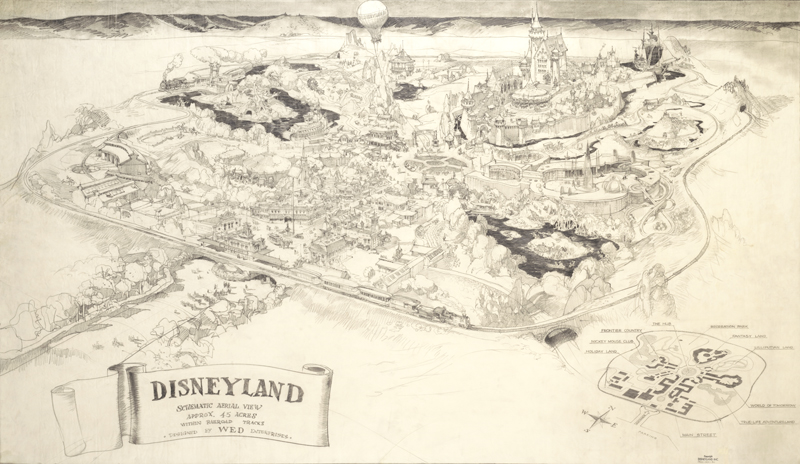
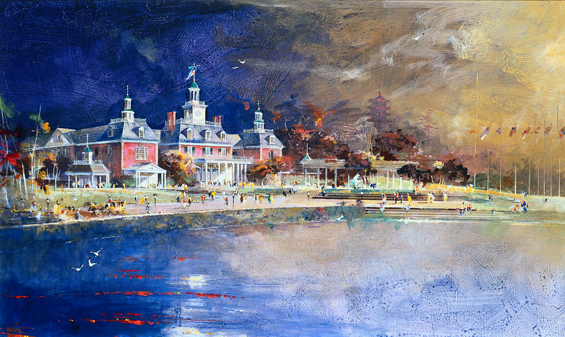
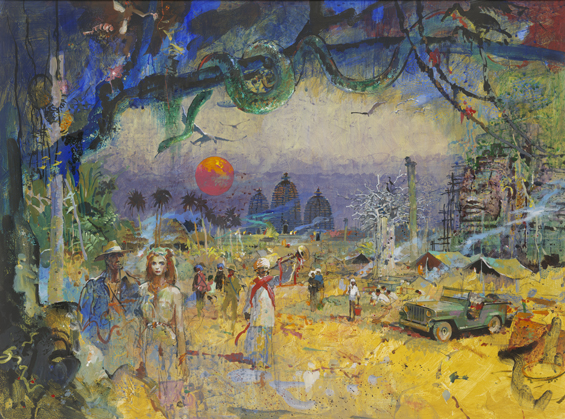
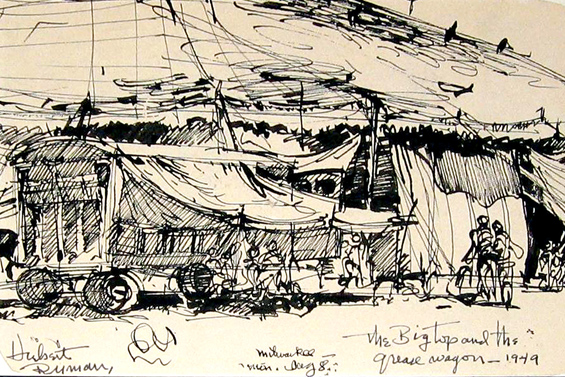
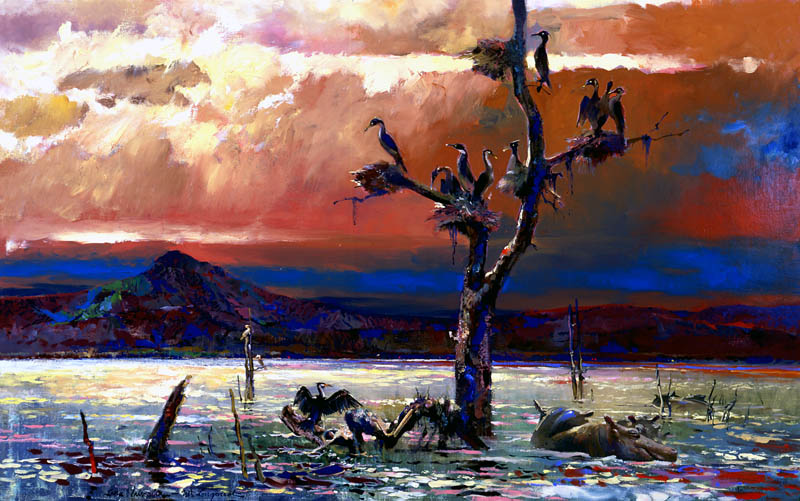
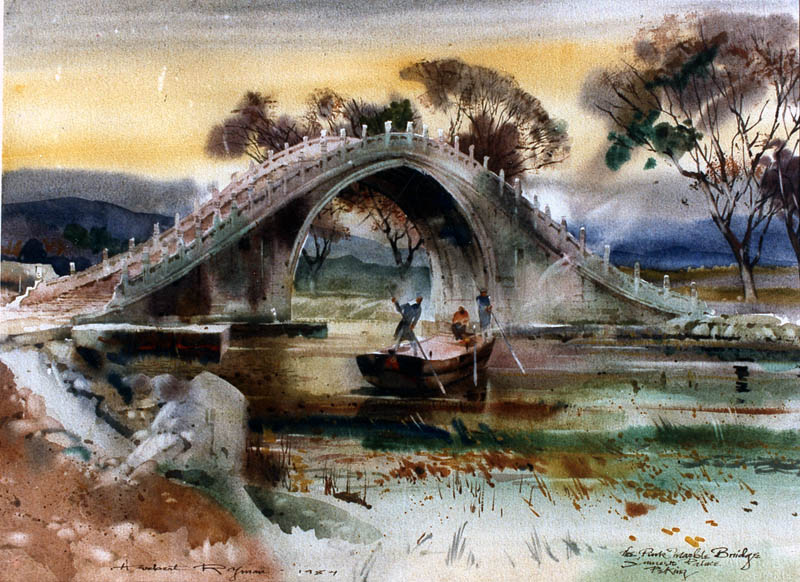
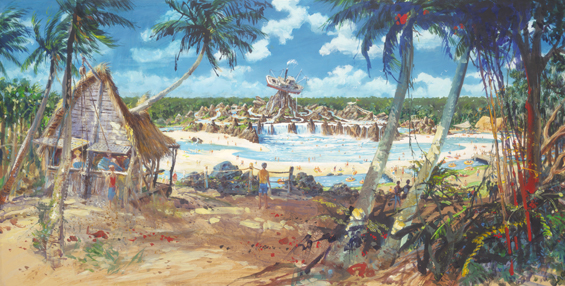

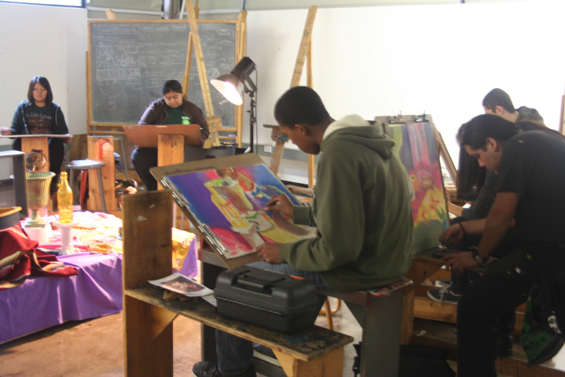
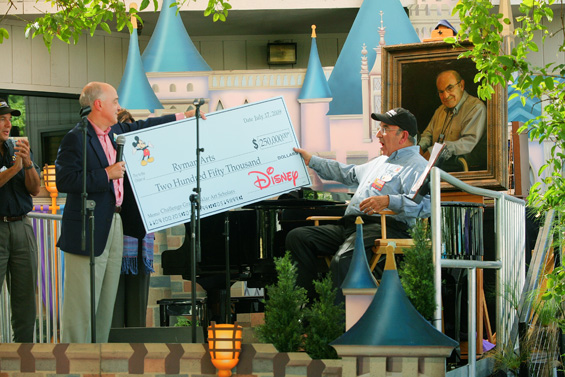
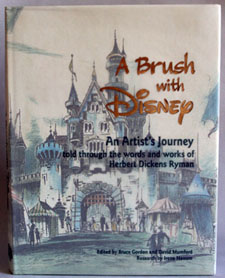
Leave a Reply